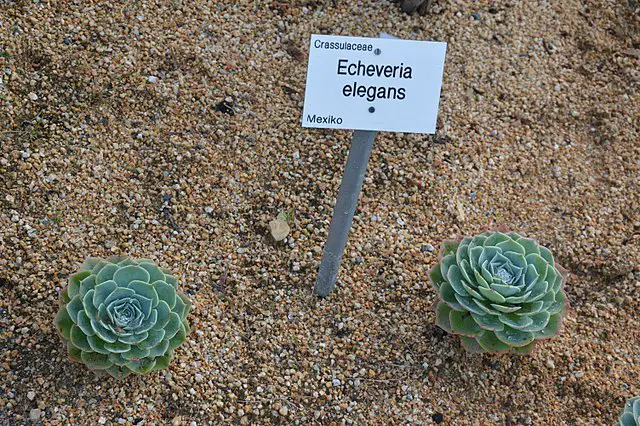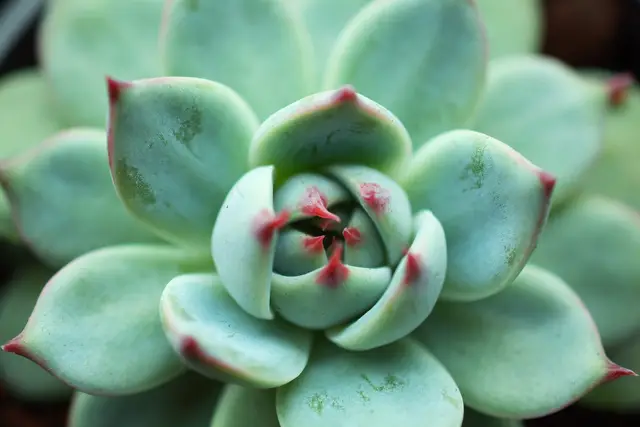Etiolation is a phenomenon which happens in cacti and succulents – but which can apply to all plants – in which their stem stretches out and they become tall and ‘leggy’ looking as a result of having to strain for energy and resources. This happens when they are kept in a place with too little light and as a result have to expend energy into growing towards the available light, which results in weak plants with fragile, delicate stems. Etiolation can also affect the color of the leaves and general vitality of the plant, making it near impossible for an etiolated plant to flower as it simply doesn’t have enough conserved energy to reproduce.

Etiolation in succulents can be quite common as many of them come from areas where they are exposed to large amounts of daylight every day, often for the whole day’s length, and this can be intense and extremely strong in desert areas. As a result, this problem is often seen by novice buyers who have not yet adapted to their plant’s requirements and who are often shocked by the sudden growth pattern which transforms their previously compact plant into something which looks totally different from how it should. Got an etiolated succulent? Read on to find out how to distinguish signs of impending etiolation, what to do about it, and how to prevent it.
What Causes Etiolation in Echeveria Elegans?
An etiolated echeveria elegans looks so different from its healthy counterpart that sometimes it may be hard to even recognize them as the same plant. As a result, spotting an etiolated echeveria can be tough as they can look so different, that to someone who is unknowledgeable about the plant’s typical growth, it may look like a completely healthy albeit slightly odd looking plant!

The natural growth formation of echeveria elegans is a small compact rosette which sits near the ground and has sturdy looking, water storing leaves. As echeveria elegans etiolates it begins to grow a longer stem and lose some of its compactness and rosette formation, and as it grows up towards whatever scarce light there is, its leaves begin to go floppy (depending on the amount of resources) and point downwards. In fact, this downward pointing is a characteristic phenomenon of etiolation in all succulents, and as a result spotting this can make the difference between saving a plant from full etiolation or saving an already etiolated plant, and letting it stretch itself beyond repair.
Ultimately etiolation in echeveria elegans and in all succulents is caused by lack of light or insufficient availability of light. This could look like the plant being kept in a room which is too dark for it, or it being given sufficient light but for a period of time which is too short and therefore ultimately not photosynthesizing enough. Echeveria elegans needs up to eight hours of direct sunlight per day due to its natural environment.
This succulent lives in the state of San Luis Potosi in Mexico at a latitude where it is exposed to almost as much sun as plants would in the tropics, albeit at lower temperatures because of its mountainous habitat. Therefore its availability of light is one of the most important factors towards its healthy growth. When keeping echeveria elegans it is important to place it in an area where it is exposed to full daylight from all angles. Echeveria which do not get enough light on one side generally end up growing towards the side which is getting light and this can often be the start of etiolation.
Ways of Solving Etiolation in Echeveria Elegans
Unfortunately, once a plant is etiolated there is not much you can do to reverse the process. Changing the plant’s appearance often means cutting the stem and removing leaves in order to return the remainder of the plant to its compact, healthy rosette formation. Another alternative method is propagation in the sense that one etiolated plant can be turned into many new healthy plants by removing all the leaves and propagating them as you would normally – by placing them in a bright, dry spot and allowing them to grow roots and form new plants.
If you wish to keep the etiolated plant the best way of reviving it is to cut the stem near the top and place this into soil so that it can form the start of a new rosette. Once this is done, give it plenty of water and make sure it is placed somewhere with adequate light – somewhere much more brightly lit than it was previously, as if this was the cause of the etiolation so it is important to observe and change these conditions.
As etiolated plants have been deprived of resources, when reviving them this way it can be helpful to use a grow light and or a heated mat so as to re-nourish them and give them an energy boost after being deprived of energy for so long. Etiolation can also affect your Mexican snowball’s root system, as all the energy is put into growing and elongating the stem. Deep watering interspersed with periods of dryness can help these regain their former strength.
Ways of Preventing Etiolation in Echeveria Elegans
As once a plant is etiolated it is very difficult to get it back to its original state, it’s very important to spot early signs of etiolation and prevent these from occurring. As written above, one of the most important signs in the downward pointing leaves which are a characteristic of all etiolated plants.
In echeveria elegans these may at first look like horizontally pointing leaves as this succulent’s natural growth pattern is of having upwards pointing leaves. This is a good early warning sign and resultantly the plant should be moved into a brighter position with increased duration of light as soon as these are spotted.
One problem which faces Mexican snowball and other popular houseplants is the fact that they are often kept in circumstances where they get intermittent light, such as in offices where the lights are turned on and off, or rooms which are only lit when they are in use. If this is the case then preventing etiolation may require the plant to be moved from the main room which it is intended for when it is not in use, or alternatively, another position being chosen which has access to a more consistent source of light. One place echeveria elegans must never be kept is the bathroom because this room has such intermittent light that etiolation is almost guaranteed. Furthermore, humidity is also too high for Mexican snowball.
Circumstances in which Etiolation Happens in the Wild
In the wild etiolation can happen as a result of all sorts of circumstances, especially because of the random conditions under which succulents can take root. For example, echeveria elegans which have grown as a result of leaf propagation from a larger plant dropping leaves may end up in the shadow of much stronger plants and as a result may have to strain for light. Additionally in echeveria elegans’ mountainous habitat it may end up growing in crevices where it may occasionally be sheltered from light by the natural way shadows fall across the landscape.
As the natural ecosystem around them shifts, etiolated Mexican snowballs in the wild may recover of their own accord as conditions change. Mimicking this for etiolated plants in urban circumstances can make all the difference for their growth and general health. In addition, etiolated Mexican snowballs in the wild are more prone to dropping leaves, which is the natural version of propagating an etiolated echeveria by leaf to create new plants. This is the plant’s survival mechanism and generally means etiolation has become severe.
In conclusion, etiolation is one of the first phenomena a novice succulent grower may come across and as a result often takes them by surprise when it first appears. However, it is a common process which is essentially a stress response to lack of ideal environmental conditions and therefore if spotted early enough can be prevented before it becomes too severe. It is important to catch problems such as etiolation early on because of how plants under stress eventually become more prone to pests and diseases due to their weakened state – and when etiolated can also suffer more severely from the effects of over and under watering.
However, with the correct response, they can without a doubt bounce back and replenish themselves even if not in the same state as before and go on to continue growth in a healthier manner. Succulents are distinctive looking plants – especially echeverias – and fortunately the signs of etiolation are easy to spot as they are so separate from the plant’s normal characteristics. Therefore in this way, etiolated plants can recover and as a result novice growers should gain a deeper understanding of their plant’s requirements early enough that they can fix things.



